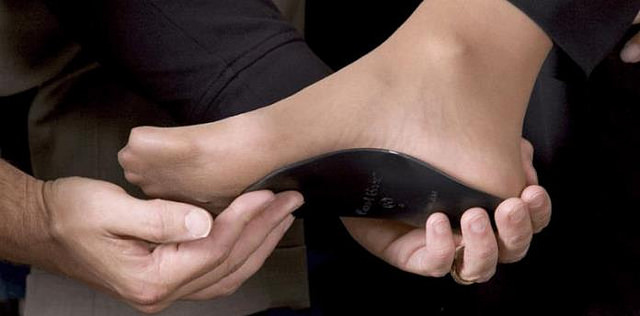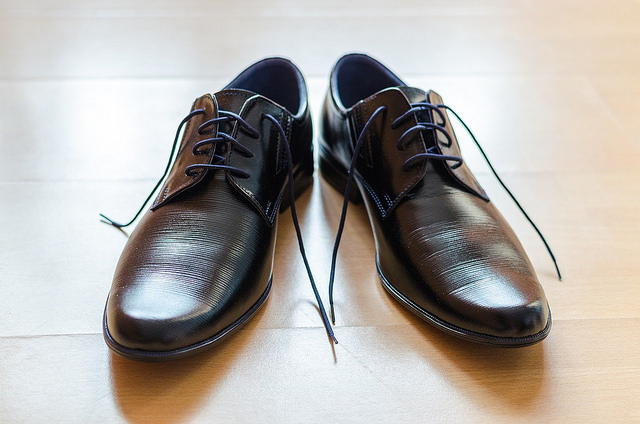If you’ve got flat feet, then do your feet absolutely require orthotics? The answer might surprise you. In most cases, you do need orthotics when you’ve got fallen arches. But some people manage to walk fairly well on flat feet. You’ve got to judge it on a case by case basis. Statistics don’t mean anything to the individual.
If you have flat feet, odds are that you need a good pair of insoles to give you that extra bit of support. However, it’s possible to walk fairly well on fallen arches. More often than not, fallen arches will cause your feet to turn inward, which has a negative effect on your whole body’s position. Your ankles and knees can truly suffer when you are standing and walking wrong.
So if you’re going to get orthotics, what kind of orthotics would they have to be? Custom ones, or over the counter ones? Read on to learn more, because we’ll be investigating this topic in the rest of this article.
Why Wear Orthotics?
If you have a pair of properly fitting orthotics in your footwear, then this can help you solve a number of problems, such as:
- Weak ankles
- Sore feet
- Foot deformities
- Misalignment
This list is by no means all inclusive!
However, not all orthotics are equal, so it’s important that you choose the right ones for you. If you are wearing a pair of poorly fitting orthotics, then this can actually have a negative effect on your position and thereby your entire gait. This can actually make matters go downhill in a big, big hurry. A skeletal misalignment can lead to so many problems in the long term, it’s not even funny anymore. For heaven’s sake, take your own biomechanics seriously. Ignore this advice at your own peril!
If your feet are in relatively good condition, but you are suffering from some minor foot pain, then you might want to take the time to fit yourself a couple of good insoles that will give you that extra bit of cushioning so that you can stand more comfortable and, if possible at all, pain free.
For this goal, a pair of over the counter insoles. These can often retail for as little as $20 to $40, sometimes more, sometimes less. If you have more serious problems and therefore more serious demands from your insoles, then you’re going to have to go with custom fitted orthotics. These can cost a few hundred bucks per pair. It’s nothing to sneeze at. But then again, neither is the future health of your feet.
If you have some type of foot health problem, then you might be able to get a pair of custom fitted orthotics from a podiatrist and then get it convered by your insurance. Sometimes, you’ll want extra pairs for other pairs of shoes. Nobody ever feels like having to put one pair of insoles into another pair of shoes all the time. For these other pairs, you might put up with over the counter insoles instead. They’ll give less arch support, which isn’t customized at all. But it’ll save you some much needed rent/mortgage money.
For some people, non-custom insoles can be as effective as custom insoles. While custom insoles might sound like a really great idea, the problem is that the custom fit doesn’t always fit. It turns out it’s pretty hard to measure the shape of the human foot and then get an exactly fitting custom insole from that. Not everybody is equally good at standing still while getting their measurements.
How To Choose Good Insoles?
When you are on the lookout for a pair of good insoles for your flat feet, then you will have to look for labels such as “American Podiatric Medical Association” or “American Orthopedic Foot & Ankle Society“. When these labels are on there, you’ll know you’ve got your hands on something good.
Naturally, you’ll have to check the sizes of the orthotics that you are eyeing. They’ll have to fit inside the pair of shoes that you want to put them into. Some insoles, you can cut yourself, so they’ll fit into any shoe. If they can be trimmed for perfect fit, then sizing doesn’t matter so much. They’ll be long enough that they can fit into a pair of clown’s shoes, if need be.
Also make sure to buy insoles that are fit for your own gender. This can make a difference in how the insole supports your feet, ankles, hips and legs. It makes a difference whether you are a man or a woman. We’re differently built and differently aligned.
Don’t Skimp On The Shoes
Insoles alone aren’t going to cut it. You also need good shoes. Some people get good shoes, but neglect to buy a good pair of insoles. Others buy insoles and put them in a pair of 5 year old, worn out and downtrodden sneakers that are falling apart at the seams.
You need a well fitting, supportive shoe, which meets the following requirements:
- The forefoot of your every day walking shoes is going to have to be flexible. You will need to be able to bend it at the point where the ball of your foot will be when you wear them. Running shoes need to be more rigid.
- The shoes will have to have a heel cup that is rigid and sturdy. It’s best if it is made of a material that gives you durability, such as a polymer. If you get cheap shoes, the heel cup will be made of an inferior material.
- You will need to have plenty of room in the toe box. Enough room that you can wiggle your toes freely.
- The shoe may not allow you to twist it from front to back. If it’s too flexible in this direction, then it can never give you enough support. There’s such a thing as too much flexibility.
Despite the fact that orthotics can play a major role in letting you walk upright comfortably for days on end, doesn’t mean you can afford to walk on sub par shoes. Get supportive, comfortable shoes first. Try them out. If you don’t have enough support, the problem can always be fixed with orthotics.
[jbio template=”bootbomb0″]



0 comments